Legislative Worksheet (SBAR Format): Healthcare Bill Analysis
VerifiedAdded on 2022/09/17
|5
|1089
|21
Homework Assignment
AI Summary
This assignment presents a legislative worksheet formatted using the SBAR (Situation, Background, Assessment, Recommendation) method, focusing on a proposal to improve home healthcare services. The situation identifies the problem of home visiting nurses facing delays in reaching patients due to traffic regulations and the need for quicker response times for urgent cases. The proposal suggests enacting legislation to treat caregivers in their home as part of emergency medical services, including the use of signal lights on vehicles. The background section includes personal experiences, anecdotal stories, and supporting information about the benefits of using colored lights on vehicles, and the impact on reducing hospital readmissions. The assessment section analyzes the financial impacts, stakeholder groups that would support the bill (home care residents, hospice patients, healthcare providers, and hospitals), and potential opposition. The recommendation is to make an appointment with a legislator to discuss the proposal. References are included to support the arguments and research presented in the worksheet. The assignment highlights the potential for improved quality of home care, safety for healthcare providers, and reduced hospital readmissions.
1 out of 5
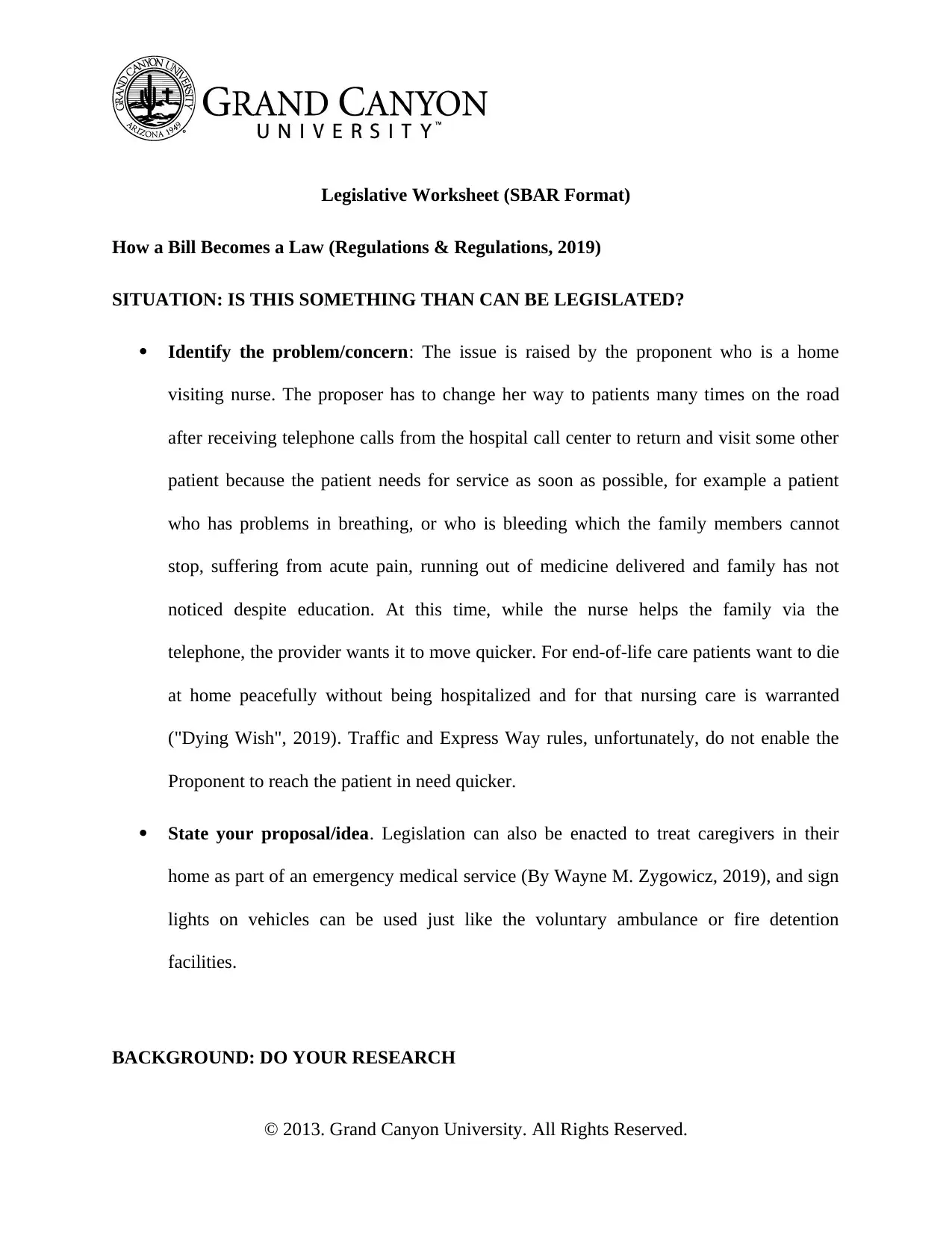
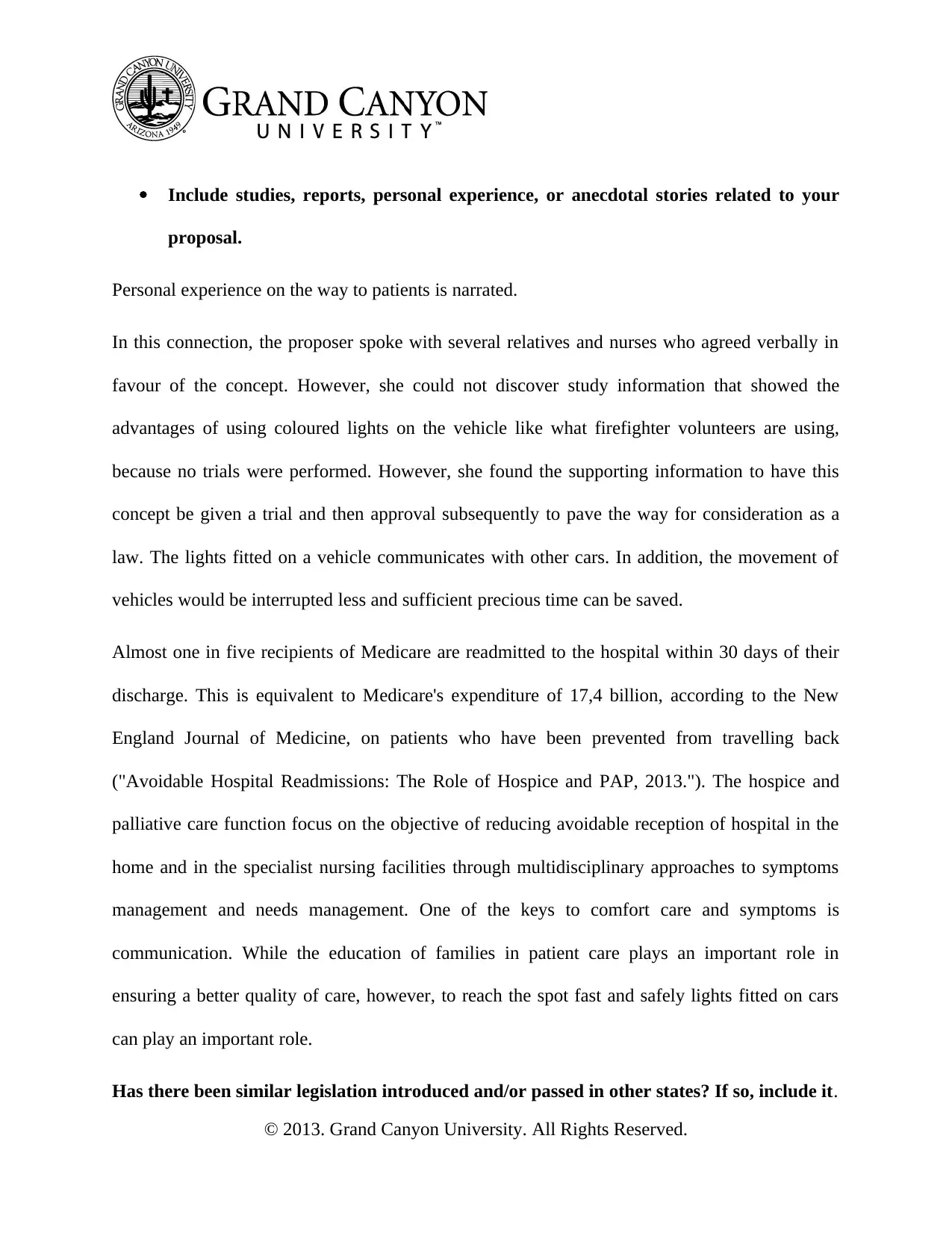
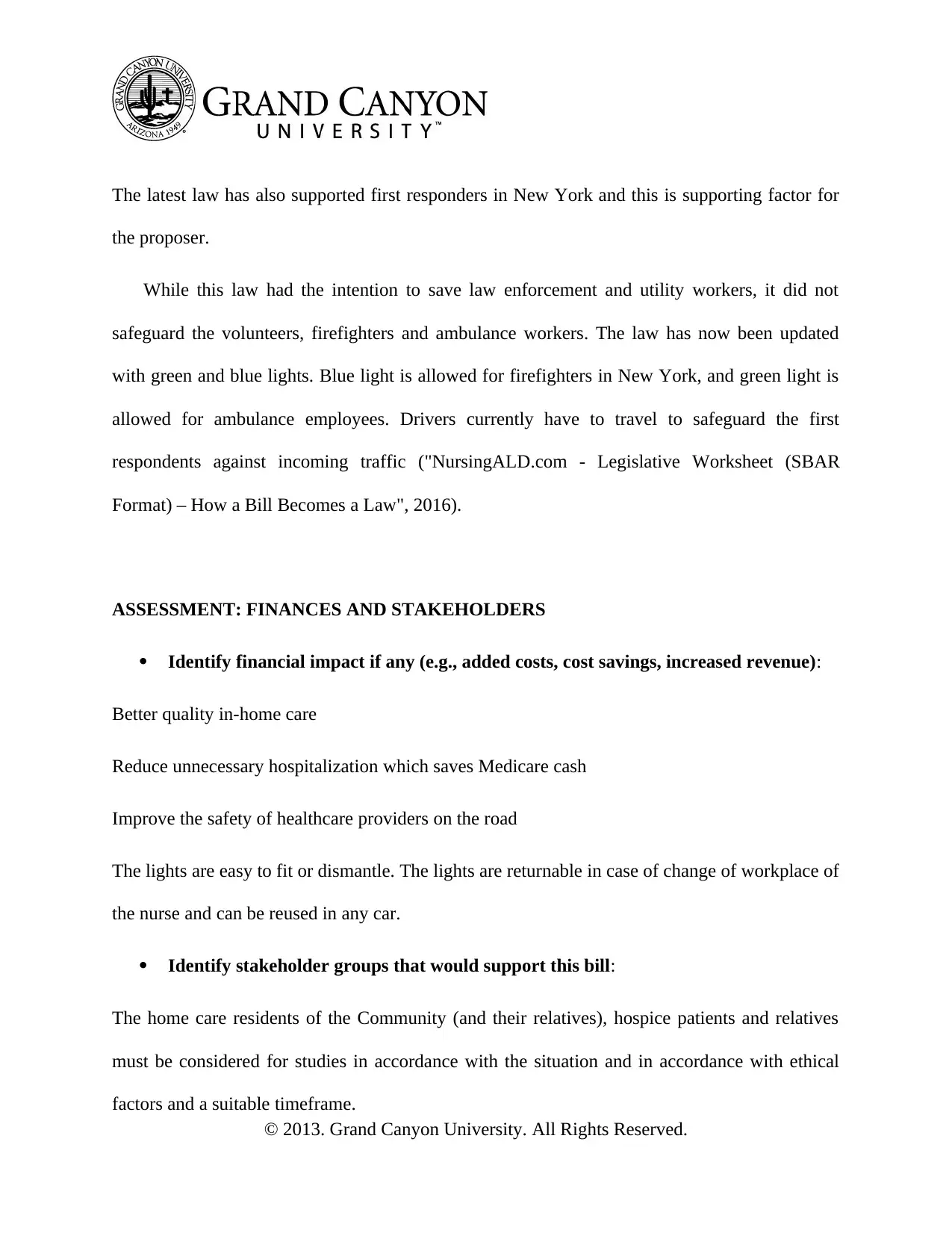

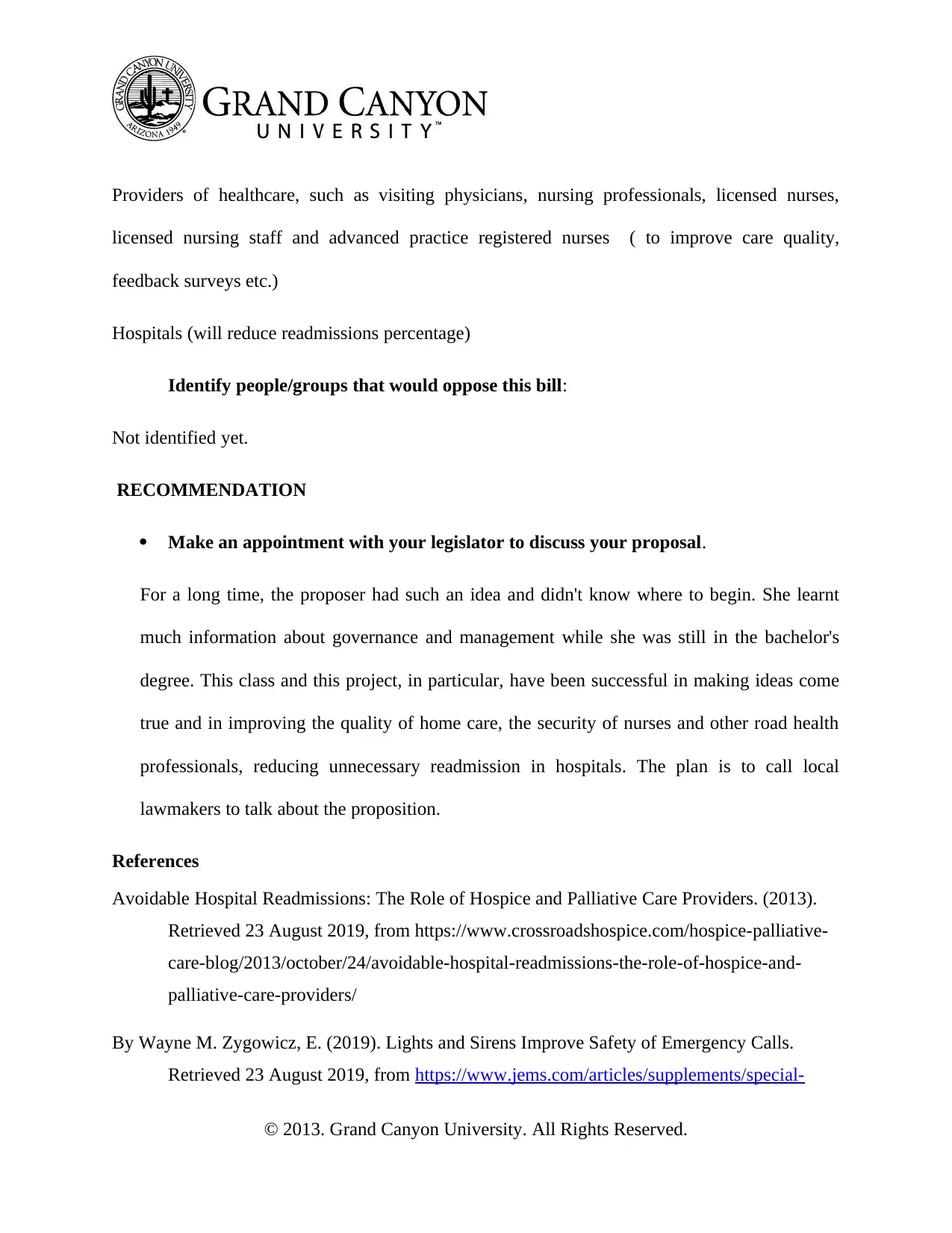
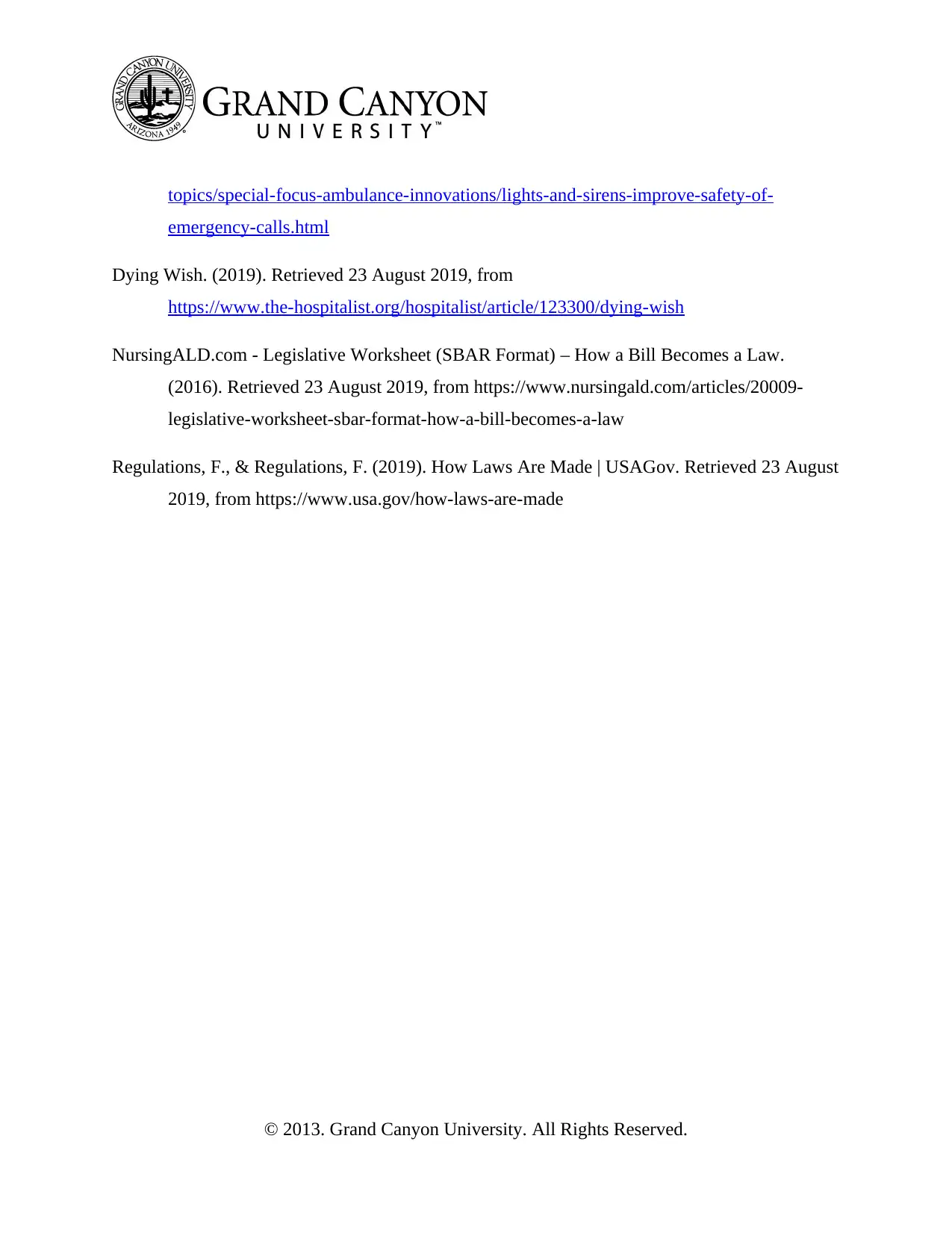
![[object Object]](/_next/static/media/star-bottom.7253800d.svg)